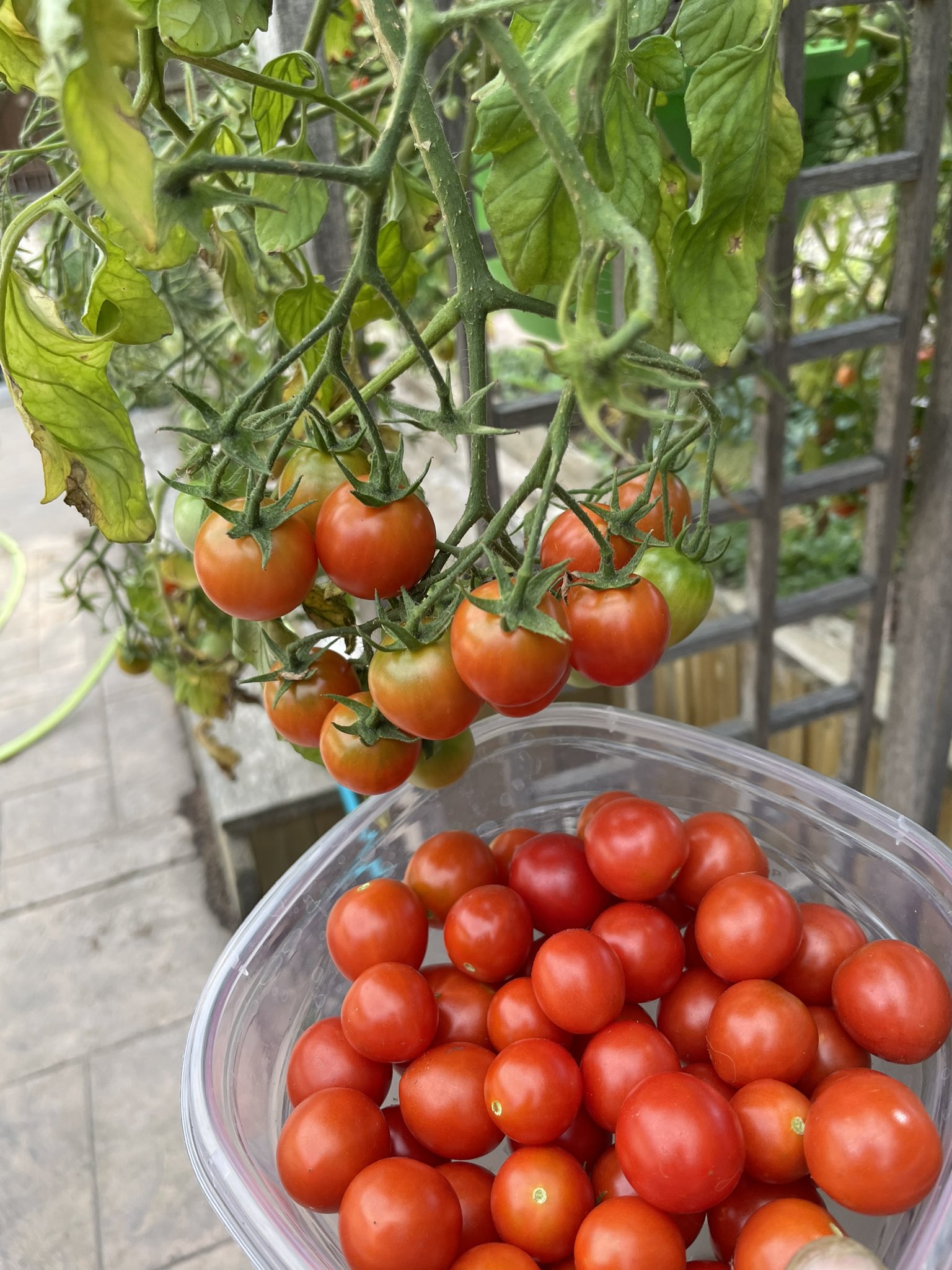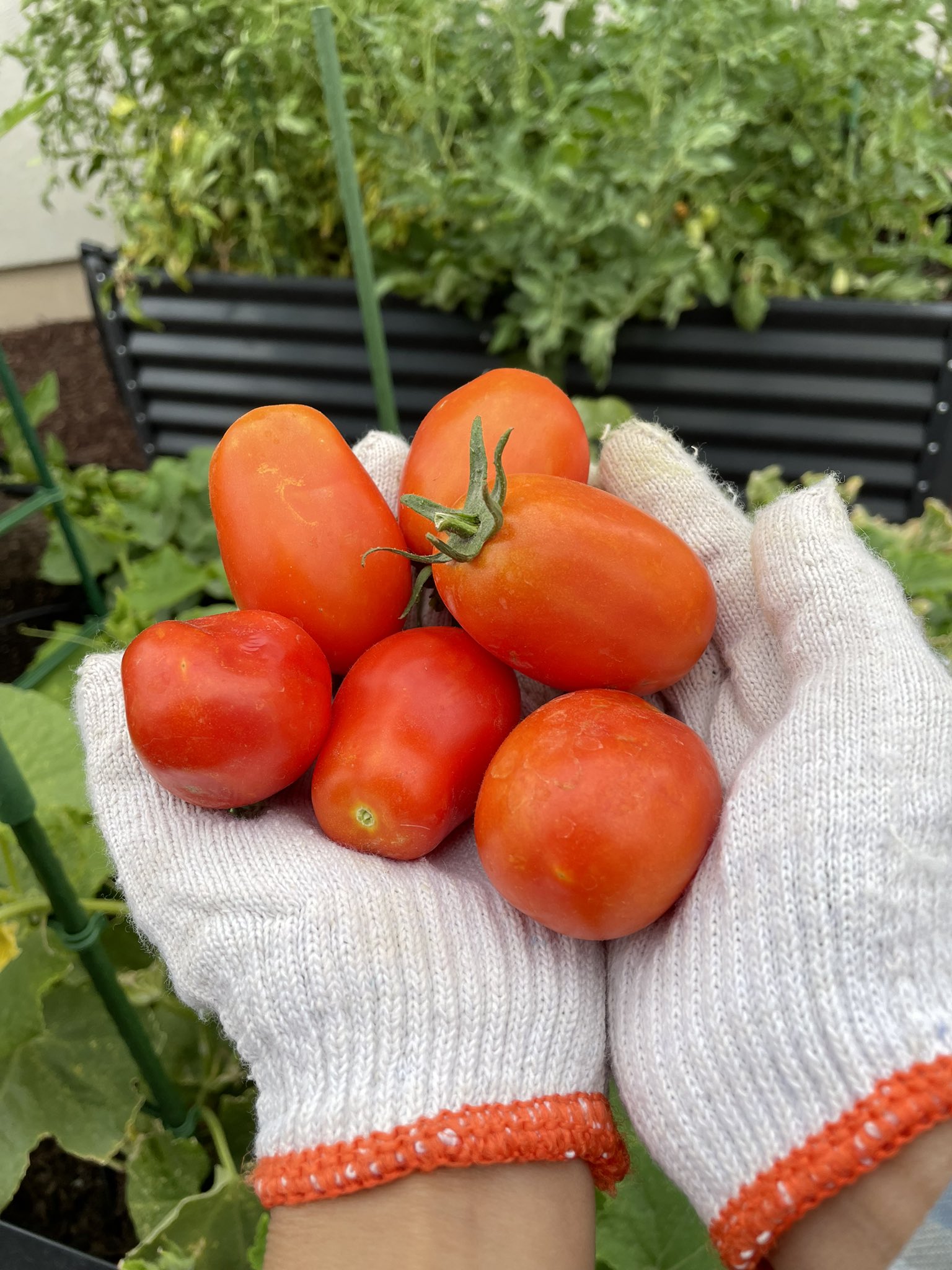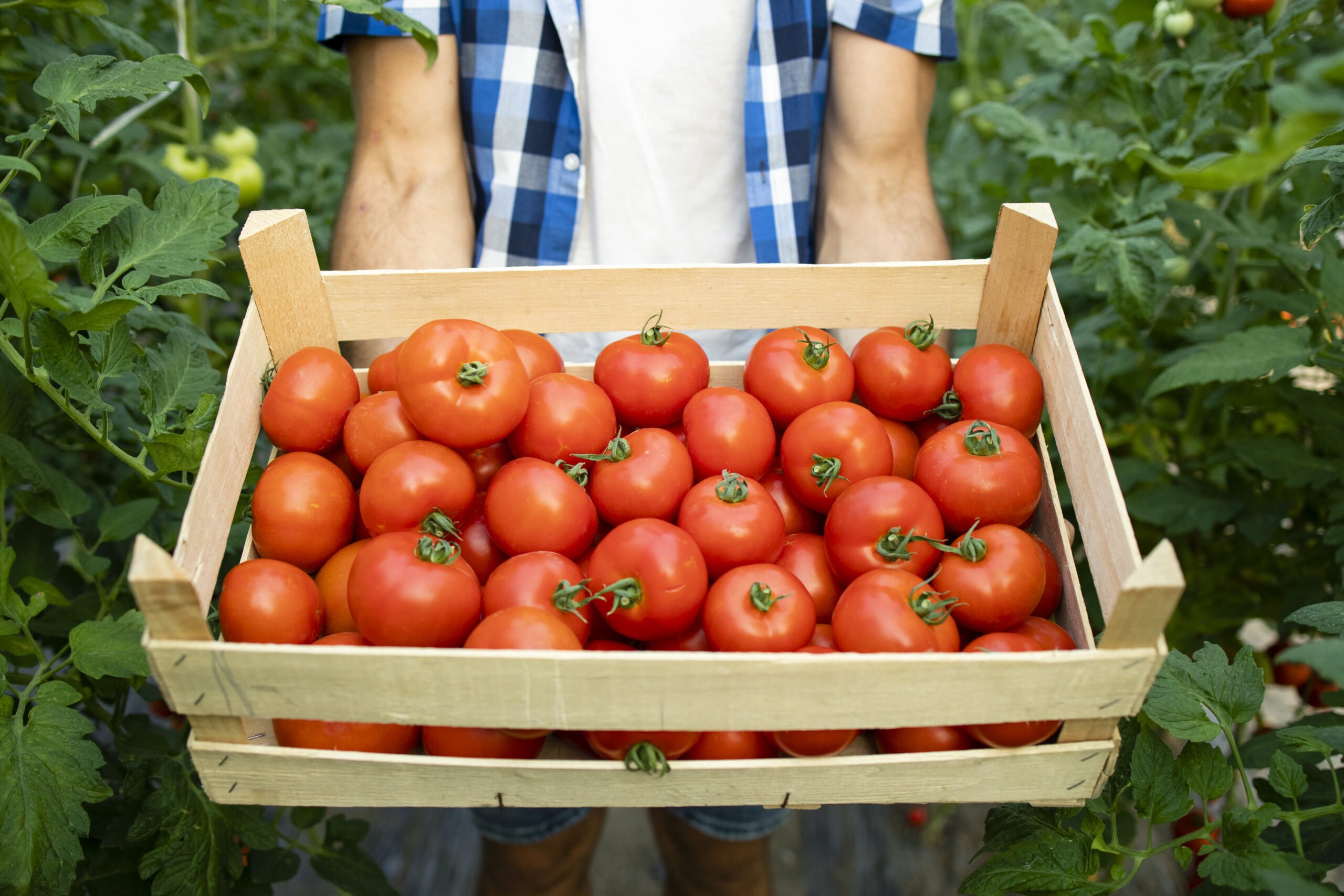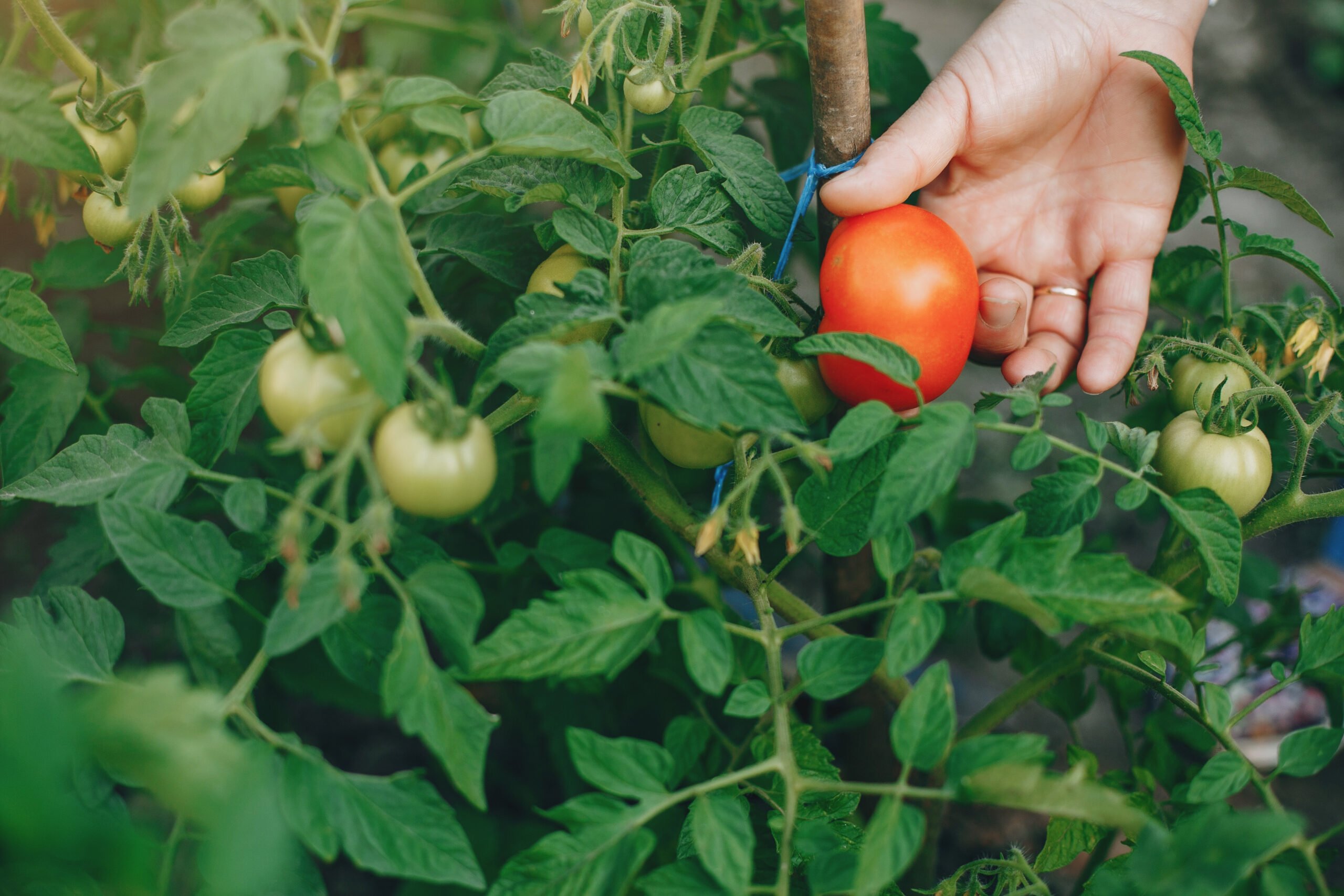
Alright, fellow tomato enthusiasts, listen up! We’re about to embark on a mouthwatering journey to discover the ultimate moment for plucking those luscious tomatoes off the vine. Whether you’re a seasoned gardener or a greenhorn in the tomato patch, knowing precisely When to Pick Tomatoes is an art that can transform your harvest from average to exceptional.
Table of Contents
What Do Tomatoes Look Like When They Start To Ripen?

When tomatoes start to ripen, their appearance undergoes noticeable changes. The specific appearance can vary depending on the tomato variety, but here are some common characteristics you might observe during the early stages of ripening:
- Color Change: Most tomatoes start as green, and as they ripen, their color begins to change. The green hue will gradually shift towards the final color characteristic of the specific tomato variety. For example, red tomatoes turn from green to light green, then pale yellow or orange, before finally developing their vibrant red color when fully ripe.
- Firmness: As tomatoes ripen, they become softer to the touch. When they are still green and unripe, they are quite firm and hard. As the ripening process progresses, they yield slightly to gentle pressure, indicating that they are becoming more mature.
- Size: The size of the tomato remains relatively constant throughout the ripening process. However, the fruit might feel heavier as it accumulates more sugars and water content.
- Aroma: Green, unripe tomatoes usually have a faint or nearly absent smell. However, as they ripen, they start to emit a distinct, sweet, and earthy aroma. This aroma becomes more pronounced as they approach full ripeness.
- Texture: The skin of an unripe tomato is smooth and shiny. As it ripens, the skin might become less shiny, and you might notice some subtle changes in texture. However, it generally remains smooth until the tomato reaches full ripeness.
- Attached Stem: When tomatoes start to ripen, they will still have a strong attachment to the vine. As they mature, the stem may loosen, and a fully ripe tomato will detach easily from the vine when gently pulled.
It’s essential to remember that the ripening process can take different amounts of time depending on various factors such as the tomato variety, temperature, and growing conditions. As the tomato continues to ripen, the changes in color, texture, aroma, and firmness will become more pronounced until it reaches its peak of flavor and nutritional content. At that point, it will be fully ripe and ready to be enjoyed!
Early Birds vs. Late Bloomers: When To Pick Tomatoes For Different Types
When it comes to tomato harvesting, different tomato types have their own unique timing requirements to achieve the best flavor and quality.
When To Pick Beefsteaks and Heirlooms
For Beefsteak and Heirloom tomatoes, patience is key. These varieties need time to develop their full-bodied flavor and size. As they grow on the vine, observe them closely and wait until they reach ripe maturity. The telltale sign is when they blush with vibrant colors, indicating that they are fully ripe. At this stage, their taste and aroma will be at their peak, making them ideal for indulgent caprese salads, delectable sandwiches, and any dish that benefits from their rich, luscious flavor. So, resist the temptation to pick them too early, and your patience will be rewarded with slices of tomato heaven!
When To Pick Cherry and Grape Tomatoes
On the other hand, if you’re growing cherry tomatoes and grapes, they are the early bloomers of the tomato family. These petite delights reach their peak sweetness relatively early in their growth cycle. Keep a close eye on them as they mature. Once they’ve achieved their ripe, sweet flavor, don’t hesitate to pluck them from the vine promptly. These bite-sized treasures are best enjoyed fresh, either popped straight into your mouth as an irresistible snack or added to salads for delightful bursts of flavor.
What Time Of The Day Should You Pick Tomatoes?
The best time of day to pick tomatoes is in the morning, after the dew has dried but before the heat of the day sets in. Here’s why:
- Cooler Temperatures: Mornings generally offer cooler temperatures compared to the hotter parts of the day. Cooler temperatures can help preserve the quality of the tomatoes, as they are less prone to heat stress or wilting during harvesting.
- Higher Moisture Content: Early mornings often have higher humidity levels due to dew, which can add some moisture to the tomatoes. This can be beneficial for the tomatoes’ texture and can reduce the risk of damage during picking.
- Optimal Sugar Levels: During the night, tomatoes continue their sugar production through photosynthesis, and this process usually peaks in the early morning. Harvesting at this time allows you to capture the tomatoes when their sugar content is at its highest, contributing to better flavor.
- Extended Shelf Life: Harvesting tomatoes in the morning, when they are cool and have good sugar levels, can lead to better post-harvest storage. They are less likely to deteriorate quickly and can stay fresh for a longer period.
On the other hand, it is generally not recommended to pick tomatoes in the heat of the day, especially during peak sun hours. High temperatures can cause the tomatoes to become stressed and lose water quickly. Also, picking in the heat might lead to more damage to the fruit due to increased softness and susceptibility to bruising.
In summary, aim to harvest tomatoes in the morning, when the temperatures are cooler, the sugar content is at its peak, and the fruits are less prone to damage. This way, you can enjoy the freshest and most flavorful tomatoes from your garden
How To Pick Tomatoes Like a Pro

Now that we’ve mastered the art of timing, it’s time to talk tools! Harvesting tomatoes like a pro involves a few simple tips and tricks:
The Gentle Touch

Treat your tomatoes with care, like handling delicate jewels. Gently twist the fruit until it separates from the vine. Avoid yanking or pulling, or you might end up with an unripe casualty.
The Handy Pruners
For those hard-to-reach tomatoes or clusters, don’t hesitate to bring out your handy pruners. Snip the stem just above the fruit, and you’ll save yourself from acrobatic gardening stunts.
How Do You Keep Tomatoes Fresh After Picking?
After picking tomatoes, it’s essential to preserve tomatoes properly to maintain their freshness and flavor. Here are some guidelines for storing tomatoes:
- Room Temperature (Short-term):
- If you plan to use the tomatoes within a few days, storing them at room temperature is suitable. Select a cool location that is shielded from direct sunlight for storage.
- Spread them out in a single layer to prevent them from touching and bruising each other.
- Countertop or Kitchen Shelf (Medium-term):
- For slightly longer storage, place the tomatoes on a countertop or kitchen shelf away from direct sunlight and heat sources.
- Keep them in a single layer to avoid crushing or damaging the fruits.
- Cool and Dark Place (Long-term):
- If you want to store tomatoes for an extended period, find a cool, dark place, such as a basement or cellar, where the temperature is between 50-55°F (10-13°C).
- Wrap individual tomatoes in paper towels or place them in a single layer in a shallow cardboard box or wooden crate, keeping some space between each fruit.
- Do Not Refrigerate Whole Tomatoes:
- Refrigerating whole tomatoes can negatively impact their texture and flavor. The cold temperature can cause the fruit to lose some of its taste and become mealy or mushy.
- If you must refrigerate tomatoes, only do so if they are already ripe and cut into pieces. Place the tomatoes in a container with a tight seal or wrap them securely using plastic wrap for storage.
- Keep Away from Other Produce:
- Tomatoes produce ethylene gas, which can accelerate the ripening of other fruits and vegetables. To avoid premature ripening of other produce, store tomatoes separately.
- Check and Use Regularly:
- Inspect the stored tomatoes regularly, and use any ripe ones promptly to avoid overripening and spoilage.
- If you notice any tomatoes starting to show signs of decay, remove them to prevent the spread of mold or rot to the rest of the batch.
By following these storage guidelines, you can extend the shelf life of your freshly picked tomatoes and savor their delicious taste over an extended period.
Congratulations, tomato whisperers! You’ve reached the end of our Tomato-Picking 101 adventure. Armed with expert tips, you now possess the knowledge to decipher “When to Pick Tomatoes” for the absolute best taste. So, go forth and pluck those ripe, juicy treasures off the vine, and enjoy the fruit of your labor – quite literally!
Remember, the secret lies in observing the signs, using the right touch, and mastering the timing dance. With a little love and care, your tomato harvest will be a symphony of flavor that’ll leave your taste buds singing in delight. So, get out there, embrace the sun, and let the tomato-picking magic begin! Happy harvesting!
